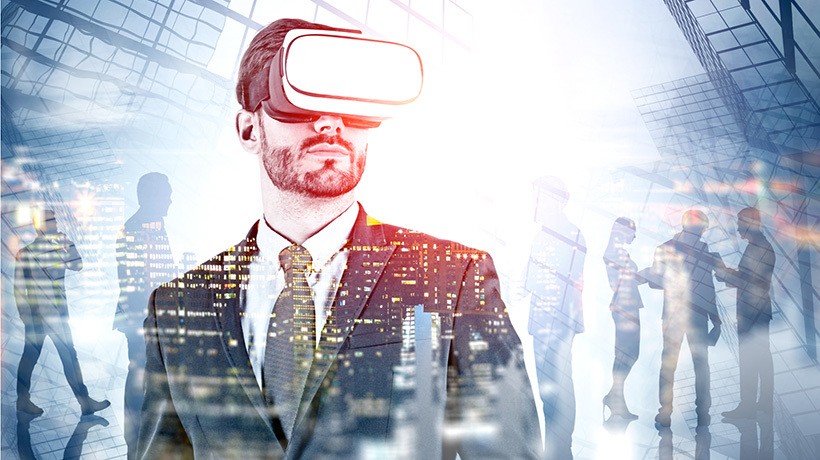Improve Employee Performance With Virtual Reality Training
Every member of the team must toe the line. They need to understand company policy and how it connects to their job duties, and be aware of personal areas for improvement that limit workplace productivity. Thus, Performance Management is an ongoing process that must walk the fine line between organizational standards and individual growth. It also happens to be one of the trickier aspects of employee training since there’s a great deal of real-world application, self-analysis, and skill-building involved. Fortunately, you can use Virtual Reality training for Performance Management to improve performance behaviors and get stray staff members back on track.

1. VR Assessments To Evaluate Employee Performance
Virtual Reality for Performance Management imparts practical experience, but it also gauges how well employees apply that experience in real-world settings. Virtual Reality assessments identify performance issues ahead of time. For example, a task simulation or serious game can test their ability to communicate with clients and match them with the right product. They can hone their skills and broaden product knowledge based on the VR training assessment results. Alternatively, use VR evaluations to see if they’re ready for promotions or have what it takes to earn their skill-based certifications.
2. Interactive Progress Maps To Chart Growth And Improve Motivation
Frame the entire VR training program with an interactive progress map so that employees can monitor their growth. This also motivates them to do better and go beyond the status quo. They may take an extra course or spend an additional half-hour on training every day. The map allows them to see how far they’ve come and what they need to do to reach the next stage. They’re even able to set their own milestones or goals along the way to make it personal. Or earn VR badges every time they reach an online training destination.
3. Immersive Simulations To Rapidly Bridge Skill Gaps
Simulations let the online training experience sink in and form an emotional connection. Employees aren’t just going through the motions or tapping into policies they’ve memorized. They must keep their wits about them and use every online training resource at their disposal to achieve the best outcome. This can also reveal hidden skill gaps discreetly and then target these areas of improvement through practical application. For example, a customer service employee realizes that their active listening skills aren’t up-to-par. They don’t need to go outside the VR simulation to bridge the gap or use customers as soft skill "guinea pigs." Immediate eLearning feedback highlights the pain point, and they can retake the simulation to develop these abilities.
4. Up-Close And Personal Product Demos
Manuals only brush the surface of product specs, features, and benefits. eLearning infographics and videos take it up a notch. But the ultimate is interacting with a VR product demo with a firsthand POV. Employees can pick up the virtual object, see how it works and how to maintain it. They’re even able to use it in real-world situations to experience the benefits. Of course, you could give them the actual product and let them take it apart in real life. But VR demos are much more cost-effective. Imagine how expensive it would be to gift your entire sales team the full product line just so they could examine the inner workings and test out the "lifetime guarantee." Virtual Reality demos can also teach them how to pitch the item to different customer groups.
5. On-The-Job Tours With Embedded Triggers
Give new employees a tour of the facility so they can explore work stations and get to know their surroundings. These VR tours with embedded triggers are also great for experienced staffers. They’re already familiar with the meeting room and customer service desk. But the triggers make it an on-the-spot support online training library. For instance, they need to know how to operate a piece of equipment. So, they slide on the headset, walk to the virtual warehouse, and click on the operational demo. You can also include brief employee bios to facilitate knowledge sharing. An employee training participant wants to build their sales skills. Thus, they travel to the VR sales floor, see who’s the strongest negotiator, then call on them for peer-based support in real life.
6. Explore Personal Anecdotes That Set A Prime Example
Reading a personal anecdote or story can foster emotional engagement. But there’s something missing. Even adding images or background music falls short. So, how do you set a positive example and let employees experience the challenge from the narrator’s perspective? Develop VR anecdotes that immerse employees in the tale and allow them to see how certain behaviors or choices impact their performance. Maybe the narrator lets anger get the best of them during a coworker conflict. Or they’re impatient with a challenging customer. Show employees how it feels to face these obstacles and how to overcome them. Another option is to present them with two different approaches to the same problem. Then ask them to tell you which is best and why. What would they do differently? Personal reflection prompts them to spot areas for improvement and look at their performance more objectively.
Virtual Reality training is a natural fit for Performance Management because it imparts experience without all those pesky repercussions. It’s a proactive approach to Performance Management as you can identify issues before they become workplace disasters that impact your profit margin, instead of reprimanding employees after the fact or trying to do damage control to save your reputation. Virtual Reality training takes preventative measures to build skills and supplement experiential knowledge while there’s still time to act.
You can launch your own successful VR training program with the right eLearning outsourcing partner, regardless of the resources and size of your business. Download the eBook VR Training Outsourcing: Your Guide To Launching A Successful Virtual Reality Training Program With A Top-Notch Content Provider and find out how to warrant your investment while boosting your employees’ performance and self-confidence.







